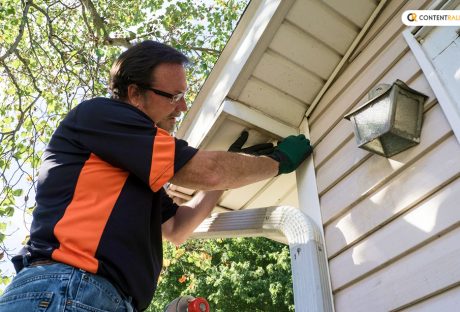As old age approaches, so do the health problems associated with it, which often lead to frequent hospital visits and increased medical expenses.
With limited income in senior years and frequent medical expenses, maintaining a balance between the two becomes quite difficult without proper preparation.
However, having a senior citizen health insurance for your old age healthcare definitely helps in solving this financial issue and also provides you with better healthcare services.
However, before selecting any health insurance for senior citizens, several key factors should be considered. But before that, you need to understand what senior citizen health insurance is.
What Is Senior Citizen Health Insurance?
A senior citizen medical insurance plan is a type of health insurance designed specifically for senior citizens aged 60 and above.
The plan provides them with financial coverage for medical expenses, such as hospitalisation, medical treatments, and procedures prescribed to senior citizens due to their age or health-related issues.
Benefits Of Getting A Senior Citizen Insurance Plan
Getting senior citizen health insurance comes with a lot of benefits. Here are some of the advantages mentioned.
- Unlike other insurance plans, some insurance providers do not ask individuals to go through a medical check-up before purchasing the policy.
- This will allow people to get admitted to some hospitals listed by the insurance company. However, the person needs to be admitted for at least a period of 24 hours.
- One can choose a no-claim bonus while renewing the policy after a claim-free year.
- These insurance plans allow tax-exempt benefits.
- These policies cover a huge range of medical expenses, and this includes every expense from before the time of hospitalization till the discharge.
10 Tips To Choose Health Insurance For Senior Citizens

When you are choosing health insurance for senior citizens, it is important that you consider these factors, so that you do not have to compromise on the essentials.
1. Check Comprehensive Coverage Options
Old age brings with it unforeseen medical issues that one may have never faced before. Having a senior citizen’s health insurance with comprehensive coverage is important.
It should include coverages such as hospitalisation, ambulance coverage, and preventive health check-ups. Moreover, opt for plans that have a cashless hospitalisation benefit and a wide network of hospitals.
2. Least Waiting Period
The waiting period is the time during which no claim for a particular ailment will be registered. For senior citizens, having medical insurance with a minimum waiting period is crucial for their care.
It ensures that they are not deprived of necessary healthcare services for an extended period.
3. Ensure Sum Insured
When purchasing medical insurance for senior citizens, the sum insured by the policy should be considered carefully. It should be of sufficient value to cover the unplanned medical expenses associated with old age.
4. Check Renewability And Age Limit
Always opt for a senior citizen plan that offers lifetime renewability. It saves you from the hassle of renewing the policy annually and provides continuous coverage without any lapses. Moreover, check the entry age for senior citizens; typically, it should be 61 years.
5. No-Co Payment Or Sub-Limits
A senior citizen should have medical insurance with no co-payment or sub-limit. A co-payment clause means that the policyholder must pay a certain percentage of the medical bill out of their pocket before the insurer covers the remaining amount.
The sub-limit clause means capping certain medical treatment expenses. Having these clauses in a senior citizen plan can be financially exhaustive for them.
6. Daycare Treatment
Another factor to consider before purchasing senior citizen health insurance is the availability of daycare treatment coverage in the plan.
Under this coverage, senior citizens can receive financial protection for medical treatments or procedures that last less than 24 hours, such as cataract surgeries and joint replacement procedures.
7. AYUSH Benefit
Several older adults believe in and have benefited from alternative treatments such as Ayurveda, Siddha, Unani, and Homoeopathy.
If you are someone who wants or gets treatment under these medical practices, then you must choose senior medical insurance with an AYUSH benefit.
Including this cover in the plan is beneficial for covering AYUSH inpatient or daycare treatment at an AYUSH hospital or AYUSH daycare centre.
8. Provides A Cumulative Bonus
Choose a health insurance for senior citizens that provides a cumulative bonus for every claim-free year. If you are a healthy and responsible adult who takes care of yourself, even in old age, then you are less likely to fall ill and file claims every year.
Then, for every claim-free year, you will get a cumulative bonus, which will be added to your sum insured amount. This means your coverage amount will increase without you paying an extra penny on the premium.
9. Easy Claim Settlement Procedure
It is essential to ensure that the senior medical insurance you purchase has a straightforward claim settlement procedure. In old age, no senior policyholder has the patience or capacity to follow up with claim experts for their claim settlement.
Thus, always choose an insurer that has a record and reviews of fast and accurate claim settlements without any hassle.
10. Clear Policy Exclusions
Policy exclusions are the treatment or procedures for which senior citizen health insurance will not provide any coverage. Before buying the policy, it should be ensured that you have a clear understanding of all the policy exclusions.
If that is not the case, then ask the policy provider for clearance regarding their exclusions, so that you do not have to face any inconvenience later on.
Elder Care Cover With TATA AIG
With rising healthcare costs and illnesses with every passing year, having health insurance for your old age becomes a necessity.
A health insurance for senior citizens is curated especially to provide you with medical benefits during your senior years. Now, with an understanding of points to look out for while buying the plan, you can choose the best senior medical insurance.
One such great senior citizen health insurance provider is TATA AIG. Their elder care policy comes with several benefits, including pre- and post-hospitalisation expense cover, inpatient treatment, AYUSH benefit, road ambulance cover, and an easy claim procedure.
Read Also:





















